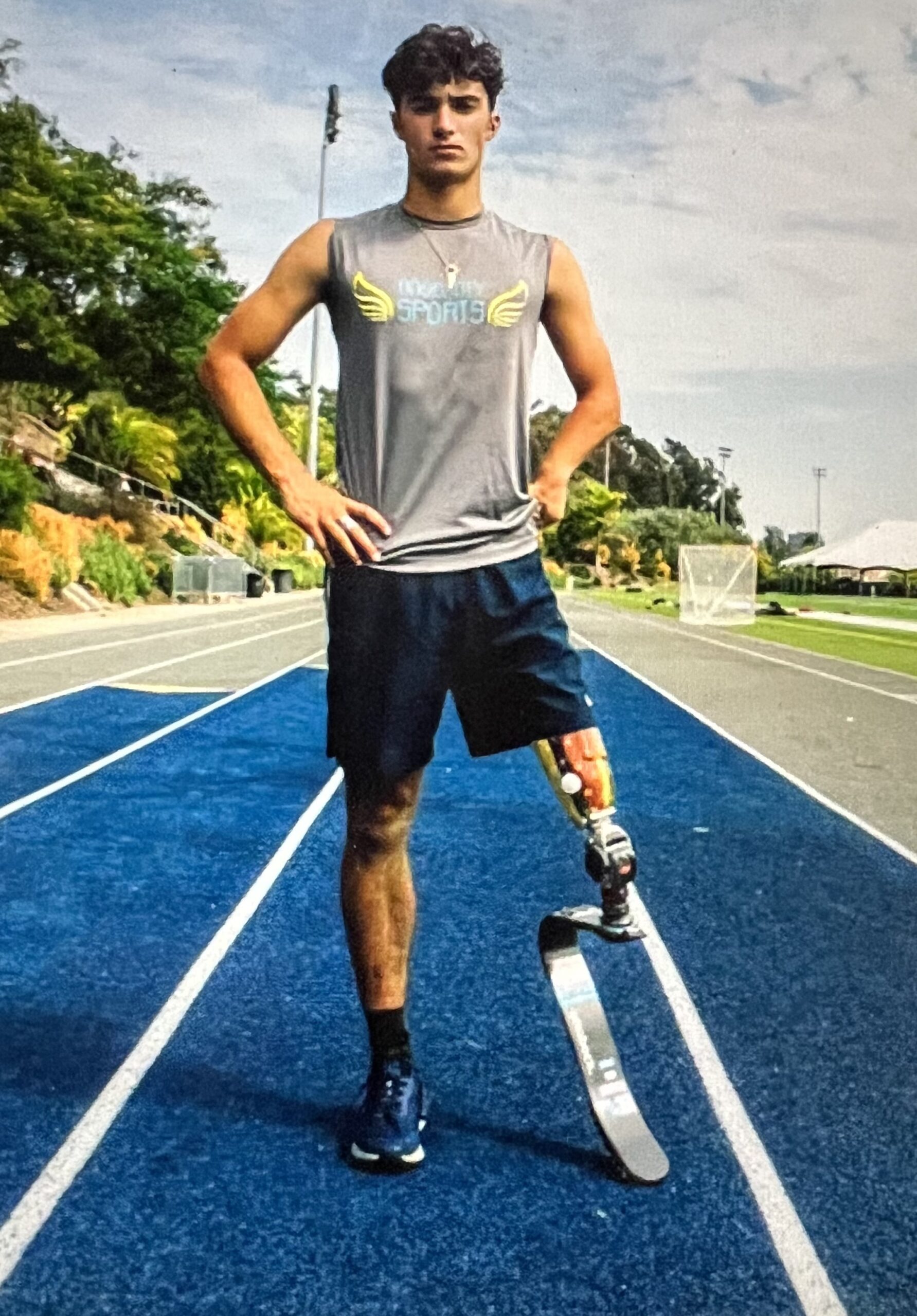Preface
May 1976
 “On your mark, get set, GO!” With that shout from a man I did not know nor could see, we all began to run as fast as we could around the Urbana High School track. At the time I was only seven years old, so to me, it was the first and only track I knew. I was racing with my brother, Peter, and a bunch of other kids. It was a beautiful Spring day in Illinois, and our parents were close by with our younger brother, Teddy. From the bleachers I could hear them cheering us both on. “Go, Meggie, Go Peter!” Wearing my only option (brown laced shoes), I began to run with all my might. Immediately, Peter, wearing his new white sneakers, took the lead. In fact, Peter ran so fast that he did not notice that his younger sister, within seconds of take-off, had tripped with a hard fall to the ground.
“On your mark, get set, GO!” With that shout from a man I did not know nor could see, we all began to run as fast as we could around the Urbana High School track. At the time I was only seven years old, so to me, it was the first and only track I knew. I was racing with my brother, Peter, and a bunch of other kids. It was a beautiful Spring day in Illinois, and our parents were close by with our younger brother, Teddy. From the bleachers I could hear them cheering us both on. “Go, Meggie, Go Peter!” Wearing my only option (brown laced shoes), I began to run with all my might. Immediately, Peter, wearing his new white sneakers, took the lead. In fact, Peter ran so fast that he did not notice that his younger sister, within seconds of take-off, had tripped with a hard fall to the ground.
Never willing to give up on anything, I hesitated for only a second, and then quickly picked myself up and chased after my brother and the other kids. We were to run the entire quarter-mile length of the track. As I made my way around the turns, I noticed the crowd seemed to be supporting me with particular encouragement. When I finally completed my lap, I had come in dead last, but I really wasn’t disappointed. It was the first time I had ever completed a run that long, and I felt particularly proud of my achievement. I wore a huge grin, and ran to find Peter.
 Only 15 months older than me and with Teddy just barely older than a toddler, Peter was the most important kid in my life at the time. On a daily basis, we would both love each other and fight with one another, as might be expected. “Are you ok?” I heard Peter’s voice and didn’t know what he was talking about until I looked down. My legs were scraped up, with blood trickling down both. There was still gravel stuck to my knees. I stared at my little shoes, wishing my oddly-shaped feet fit into regular sneakers like the other kids. In the ‘70’s, modern technology had not yet reached the running shoe industry, certainly not for someone like me. Then, my parents arrived and were joined with a crowd of strangers all asking if I was okay? My moment of glory from the race had vanished. I instantly reacted to their concern and began to cry uncontrollably.
Only 15 months older than me and with Teddy just barely older than a toddler, Peter was the most important kid in my life at the time. On a daily basis, we would both love each other and fight with one another, as might be expected. “Are you ok?” I heard Peter’s voice and didn’t know what he was talking about until I looked down. My legs were scraped up, with blood trickling down both. There was still gravel stuck to my knees. I stared at my little shoes, wishing my oddly-shaped feet fit into regular sneakers like the other kids. In the ‘70’s, modern technology had not yet reached the running shoe industry, certainly not for someone like me. Then, my parents arrived and were joined with a crowd of strangers all asking if I was okay? My moment of glory from the race had vanished. I instantly reacted to their concern and began to cry uncontrollably.
July 2012
The first time I watched the Blade Runner was when it premiered in June 1982. The film was set about 40 years into the future when mankind had made genetically engineered, human-like robots called Replicants. They were only programmed to live a certain number of years. The protagonist, a cop named Deckard, was supposed to “retire” four of these Replicants. The thing is, the Replicants were self-aware and didn’t want to die. Some fought back. I left the movie confused, too young to appreciate its meaning.
 I hadn’t thought about Blade Runner again until I heard that reference in relation to Oscar Pistorius this past year. Pistorius is the well-known athlete who, due to congenital absence of the fibula, had his lower legs surgically removed at 11 months. Pistorius has been donned the “Blade Runner” because he runs on artificial “J-shaped” lobes that look like long blades. Recently, I heard that Pistorius qualified to join the South African Olympic team to run the 400 meter dash as well as grip a baton in the 4X4 400 meter relay. Upon that news, I searched for articles about the story. I was expecting near universal applause about Pistorius’ inclusion in the races. But, instead I read his participation has created controversy. Apparently, dating back years, the International Association of Athletics (IAAF) put a verbal memo out to South Africa to strongly reconsider sending Pistorius to international competition. Although everyone admires Pistorius, many believe he belongs in only the Paralympics; that his technology-enhanced legs have an edge over other runners. However, the South African Olympic Committee chief has continued to back Pistorius, stating bluntly, “We are not taking passengers to London.”
I hadn’t thought about Blade Runner again until I heard that reference in relation to Oscar Pistorius this past year. Pistorius is the well-known athlete who, due to congenital absence of the fibula, had his lower legs surgically removed at 11 months. Pistorius has been donned the “Blade Runner” because he runs on artificial “J-shaped” lobes that look like long blades. Recently, I heard that Pistorius qualified to join the South African Olympic team to run the 400 meter dash as well as grip a baton in the 4X4 400 meter relay. Upon that news, I searched for articles about the story. I was expecting near universal applause about Pistorius’ inclusion in the races. But, instead I read his participation has created controversy. Apparently, dating back years, the International Association of Athletics (IAAF) put a verbal memo out to South Africa to strongly reconsider sending Pistorius to international competition. Although everyone admires Pistorius, many believe he belongs in only the Paralympics; that his technology-enhanced legs have an edge over other runners. However, the South African Olympic Committee chief has continued to back Pistorius, stating bluntly, “We are not taking passengers to London.”
Without trying to wade too deeply into this debate, I thought I would offer simply my own view. The groundbreaking technology that gave Pistorius “legs” to learn to walk as a toddler, has now provided him the opportunity to participate in the Olympics. It’s a dream that few people born with physical differences would ever even dare to entertain. I have recently noted commercials celebrating injured or maimed war veterans now using the same technology, but Pistorius is unique in his Olympic aspirations. To me, the question of whether or not he has an unfair advantage is ironic and beside the point. It’s ironic because for most of his life, it would have been hard to find anyone who thought he lived with any unfair advantages. But it is beside the point because of the inspirational downstream impact from Pistorius’s very participation in the Games that cannot be mimicked. He stands for the principle of inclusion. He defies expectations by competing not in the Paralympics, but against “normal” athletes, and in doing so, forces us to reconsider the boundaries and definition of normal.
After seeing Blade Runner more recently, now through an adult lense, I get it. While still dark, it made me think about how we use technology to give us what we otherwise can’t have. In the movie, Replicants did everything from daily chores to providing sex (not that they should ever be confused). At some point, though, technology temps us to go too far, to reach too high and change too much. Maybe that’s what motivates Oscar Pistorius’ critics. But Pistorius is a very different blade runner. His blades give him an ability he otherwise would never have. In this case, though, they aren’t science fiction jet packs, they’re just legs made for running.
 Pistorius reminds me of the old Army slogan: “Be All You Can Be.” I thank him for not only living up to that idea, but for demonstrating how it can work for all of us, and even produce greatness for those not born with seemingly perfect bodies.
Pistorius reminds me of the old Army slogan: “Be All You Can Be.” I thank him for not only living up to that idea, but for demonstrating how it can work for all of us, and even produce greatness for those not born with seemingly perfect bodies.
Godspeed in London, Blade Runner.




